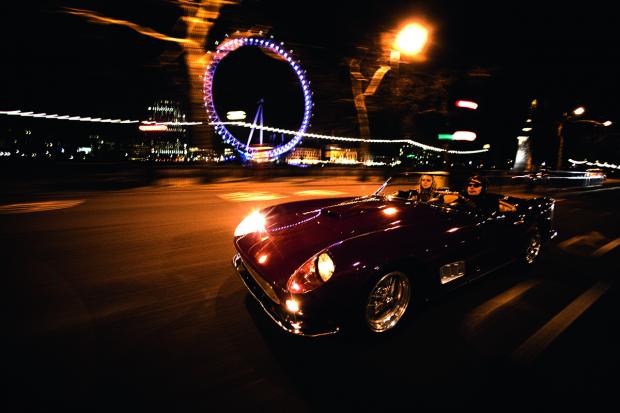
Open sports cars don’t come any more glamorous than the sublime Ferrari 250GT California Spider. Mick Walsh takes a blonde beauty for a dream drive into the West End
Beautiful machines are even more alluring at night: none more so than Ferrari’s most exotic road car, the fabulously glamorous 250GT California. Highlighted by street lamps and sparkling under the Albert Bridge illumination, this lithe 1958 V12-powered Spider has even more magnetism as its rests in a moody, cobbled Thames-side street in Chelsea. Borrani wheels shimmer from passing headlights while its lustrous wine paint finish gets ever deeper and richer. With its long, lean bonnet, steeply raked ’screen and muscular rear wing line, the California is both refined and purposeful. Its mesmeric stance exudes glamour like no other roadster. No surprise that they were driven by the most stylish of men, including pin-up director Roger Vadim and French movie idol Alain Delon.
Enough drooling over its fabulous form. Time to see if this 50-year-old legend lives up to its looks from the driving seat. Press the door button to pop up the flush slender handle, pull open the long, light door, slip on to the luxurious tan leather seat and the first surprise dawns. With the seat pushed back to its rearmost slot, this is a tight cockpit even for my short frame. The deep seat is superbly comfortable and supportive but the close, upright pedal position is initially awkward.
The dash layout – with Veglia speedo and rev counter set in a crackle-black metal binnacle – has a stripped-down competition aura. Both instruments are clearly visible through the three-spoke Nardi wheel, while the rest of the dials line up to the right, just like in the 250GT Tour de France. At least the tunnel is trimmed.











